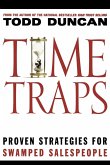Countries commencing industrialization with relatively low levels of agricultural productivity, hence low wages, enjoy advantages that can also prove host to daunting challenges. The chief advantage is a relatively elastic supply of labor for manufacturing; the chief challenge is how to free up farm labor for factory employment through the raising of labor productivity in farming. Key to raising agricultural labor productivity is providing incentives to increase effort levels including hours worked -- access to markets being crucial -- and improving the quality of labor as measured by health indicators and educational attainment. The willingness of elites to promote improvements in infrastructure -- physical infrastructure in the form of roads and railroads and hydroelectric systems; human capital enhancing infrastructure augmenting the educational attainment and health of populations in rural areas; and financial infrastructure -- and to invest directly in factories is crucial to the process by which labor is transferred from farming to manufacturing activities. During the period 1850 to 1935 elites in China tended to resist the requisite changes while elites in Japan did not. This legacy played a crucial role in shaping the nature of post-1950 economic development in the two countries.
Bitte wählen Sie Ihr Anliegen aus.
Rechnungen
Retourenschein anfordern
Bestellstatus
Storno









